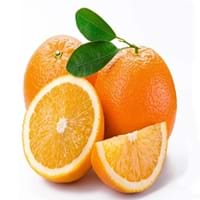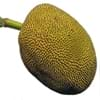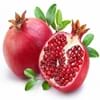Health Benefits
Anti-oxidant properties, Boosts immune system, Skin rejuvenation, Strengthening of bones
Arthritis treatment, Cancer prevention, Increases metabolic rate, Kidney stone treatment, Lower blood pressure, Prevents constipation, Prevents diabetes, Strengthening of bones, Ulcer treatment, Weight loss properties
General Benefits
Antiseptic properties, Cures headache, Removes waste from kidney
Boosts immune system, Controls blood pressure, Digestive aid, Improves eye vision, Maintains healthy cholesterol level
Skin Benefits
Hydrates skin
Anti-aging benefits, Brightens and lightens complexion, Hydrates skin, Skin rejuvenation, Treatment of acne, Treatment of dark spots
Hair Benefits
Good conditioner
Good conditioner, Prevents hair loss, Regulates hair growth, Treatment of dandruff
Allergy Symptoms
Chest pains, Rhinitis, Wheezing
Abdominal pains, Breathing difficulty, Coughing, Diarrhea, Drop in blood pressure, Fainting, Runny nose, Skin rash, Sneezing, Swelling of mouth, tongue or lips, Vomiting
Side Effects
Unknown
Abdominal cramps, Diarrhoea, Weight gain
Best Time to Eat
As a snack in the late afternoon, Don't consume at night and before bed, Eat the fresh ones, avoid mixing with any other foods, don't eat after meal., Morning time (before lunch)
As a snack in the late afternoon, Don't consume at night and before bed, Eat the fresh ones, avoid mixing with any other foods, don't eat after meal., Morning time (before lunch), Strictly avoid empty stomach
Vitamin B5 (Pantothenic Acid)
Vitamin C (Ascorbic Acid)
Vitamin K (Phyllochinone)
Phytosterol
Not Available
Calories in Fresh Fruit with Peel
Calories in Fresh Fruit without Peel
Not Available
Calories in Jam
Not Available
Calories in Pie
Not Available
Type
Tree fruit, Tropical
Citrus
Season
Early summer, Early winter, Late fall, Late spring
Winter
Varieties
Rongrien, Chompu, Rapiah, Bingjai and Lebak Bulus
Sweet Orange - Persian orange, Navel orange, Valencia orange and Blood orange. Sour Orange - Seville orange, Bergamot orange, Chinotto orange and Daidai.
Color
Coral red, Yellow
Orange
Inside Color
Greyish-white
Orange
Taste
Sour, Sweet
Sweet-Sour
Origin
Unknown
South-Eastern Asia
Soil Type
Clay, Loam
Loam, Sandy loam
Climatic Conditions
Humid
Hot
Facts about
- Oils extracted from its seeds is used to make soaps and candles.
- 'Rambut' means hairy in Malay.
- It makes the best hair mask.
- Seeds are edible and healthy too.
- There are around 600 varieties of oranges available worldwide.
- More than 1 plant can grow from a single orange seed.
- Orange and orange blossoms are a symbol of love.
- Orange tree is usually propagated by grafting.
Top Producer
Thailand
Brazil
Other Countries
Africa, India, Indonesia, Malaysia, Philippines, Sri Lanka
China, Egypt, India, Italy, Mexico, South Africa, Spain, Turkey, United States of America
Top Importer
Singapore
Germany
Top Exporter
Thailand
Spain
Botanical Name
Nephelium lappaceum
Citrus sinensis
Synonym
Rambota
Citrus aurantium L. var. dulcis
Subkingdom
Tracheobionta
Tracheobionta
Division
Tracheophyta
Magnoliophyta
Class
Magnoliopsida
Magnoliopsida
Order
Sapindales
Sapindales
Family
Sapindaceae
Rutaceae
Species
N. lappaceum
C. × sinensis
Generic Group
Not Available
Citrus fruit
Compare Rambutan and Orange
It is important compare Rambutan and Orange as both the fruits have a different nutritional value. Their comparison can be done on the basis of their vitamin and mineral content, calories, benefits as well as characteristics, making it easier for us to choose the best fruit for our diet. Their general health benefits are as follows:
Rambutan Benefits: antiseptic properties, cures headache and removes waste from kidney.
Orange Benefits: boosts immune system, controls blood pressure, digestive aid, improves eye vision and maintains healthy cholesterol level.
Fruits are also used as a remedy for various hair problems. The hair benefits of Rambutan are: good conditioner and hair benefits of Orange are: good conditioner, prevents hair loss, regulates hair growth and treatment of dandruff. Some fruits are known to cause allergic reactions. The allergy symptoms of first fruit are: chest pains, rhinitis and wheezing and the symptoms of second fruit are: abdominal pains, breathing difficulty, coughing, diarrhea, drop in blood pressure, fainting, runny nose, skin rash, sneezing, swelling of mouth tongue or lips and vomiting. Get sorted Rambutan vs Orange comparison with the help of fruit comparison tool by fruitvs.com.









